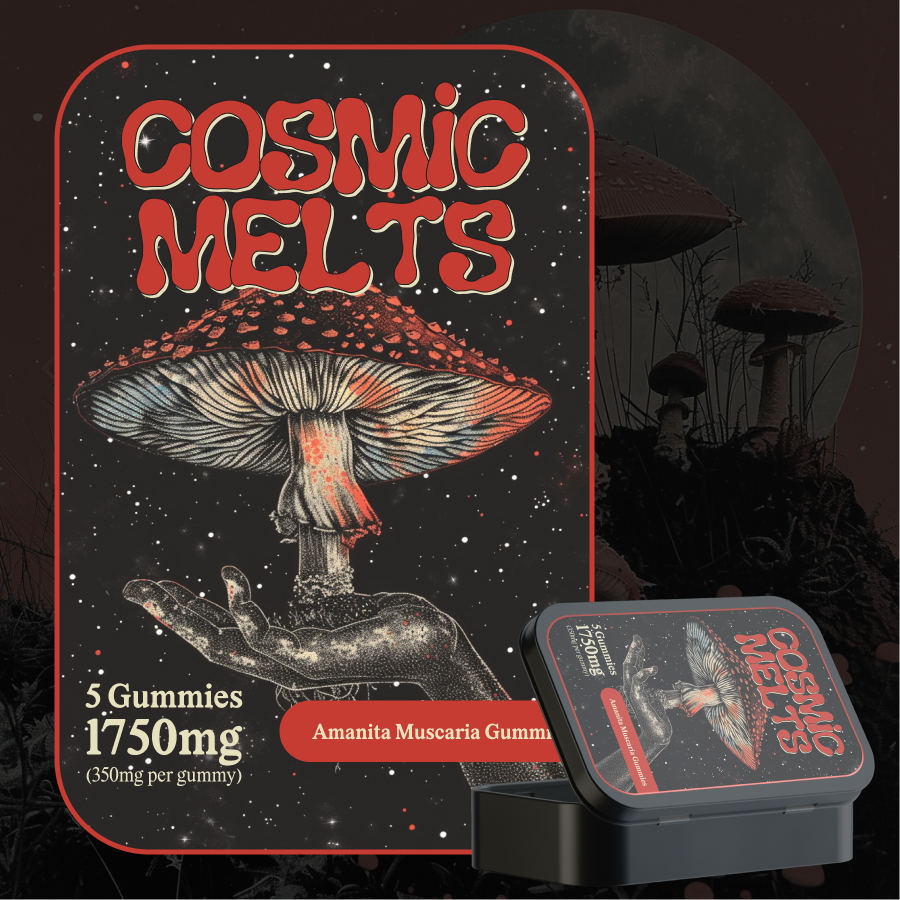In its profound mystery and vastness, the universe has always enchanted seekers, artists, and scientists alike. As civilizations rose and merged through eons, they attempted to decipher the cosmic code, seeking patterns and principles underpinning existence. One such exploration led to the emergence of sacred geometry, an ancient science that swims deep into the design language of the cosmos. More than mere lines and shapes, sacred geometry is the mathematical heartbeat of the universe, a rhythm that pulses through galaxies, planets, and even our very DNA.
For the curious traveler, the seeker of deeper truths, or the psychonaut venturing into alternate dimensions with the aid of psychedelics, sacred geometry offers a tapestry of symbols that resonate with the very core of existence. It bridges the world of the seen with the unseen, the known with the mysterious, and the mundane with the divine. Let’s embark on this journey and enter the realm where art, science, and spirituality converge into the beauty of sacred geometry.
What Does Sacred Geometry Represent?
At its core, sacred geometry is the embodiment of universal patterns and shapes that recur throughout life, nature, and even the universe itself. It provides a harmonious blend of art and science, seamlessly weaving together the realms of the tangible and the metaphysical.
The patterns and designs we find in sacred geometry are not confined to human-made constructs. They are pervasive, appearing everywhere, from the spiral of galaxies and the structure of crystals to the petals of a flower and the very design of our DNA. This ubiquitous presence suggests that these patterns serve as a foundational blueprint for everything in existence.
Sacred geometry serves as an interdimensional bridge, harmonizing the analytical with the intuitive. For the spiritually inclined, these patterns visually represent the divine, hinting at the intricate, intentional designs behind the veil of reality. For the scientifically oriented, they offer a lens into the mathematical precision that underlies our universe.
Just as the Seed of Life evolves into the Flower of Life and then the Fruit of Life, these patterns echo the nature of growth and transformation. They mirror the evolutionary process, from simplicity to complexity, mirroring the journey of life and consciousness.
In various spiritual practices and traditions, sacred geometry is believed to possess healing powers. Meditating on these patterns can tap into higher frequencies, aiding in personal transformation, healing, and enlightenment.
How Many Symbols Are There?
Sacred geometry is a vast and intricate realm, a confluence of art, science, and spirituality. As humanity’s understanding has deepened over time, numerous symbols have emerged, each bearing unique significance and resonance. But is there a definitive number of symbols within this sacred discipline?
The answer is both simple and complex. While there is a core set of well-recognized and widely accepted symbols—like the Vesica Piscis, Seed of Life, and Flower of Life—sacred geometry is an evolving field. New interpretations and insights have led to a further deepening of its lexicon over time. Many cultures, from ancient Egyptians to Mayans, have contributed unique symbols and patterns to this rich tapestry.
Moreover, as our knowledge expands, particularly with advancements in fields like quantum physics and molecular biology, new geometric patterns reflective of the universe’s design are discovered. This ever-evolving nature means that while there are foundational symbols everyone acknowledges, there isn’t an absolute number that can capture the entirety of sacred geometry.
Examples of Sacred Geometry
The cosmos dances to the rhythm of geometric patterns, an intricate ballet of mathematical precision and spiritual profundity. Sacred Geometry provides us with a glimpse into this dance, revealing patterns that resonate with the underlying fabric of existence. These symbols are not mere abstract designs; they often emerge from the most secret places in nature, underpinned by deep mathematical truths, and carry a wealth of spiritual and historical knowledge.
Vesica Piscis

Emerging from the overlap of two identical circles, the Vesica Piscis can be seen in the structure of the human eye. Mathematically, it represents a basic geometric shape from which many constructions can be birthed. Spiritually, it has been embraced by many cultures as a symbol of the union of opposites and the intersection of realms. The overlapping pattern of fish scales, which appears similar to the Vesica Piscis, showcases this symbol’s prominence in the aquatic world.
The Torus
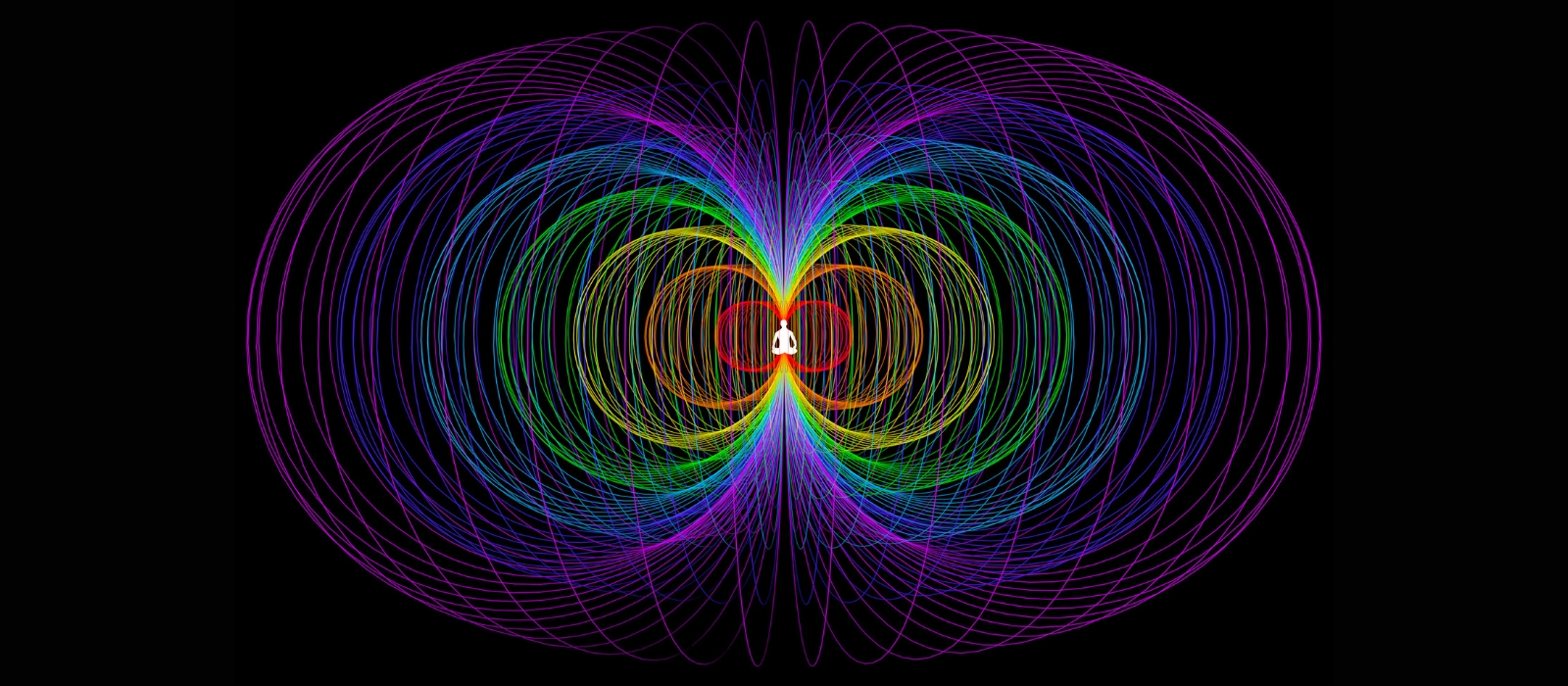
Resembling a doughnut, the Torus can be observed in phenomena such as magnetic fields around Earth. It exemplifies dynamic equilibrium, with science uncovering its importance in advanced physics. In spiritual terms, it signifies continuity, renewal, and the cyclic nature of the universe. Apple cores, when cut horizontally, reveal a Torus structure, reminding us of this shape’s prevalence in the fruits we consume.
Seed of Life
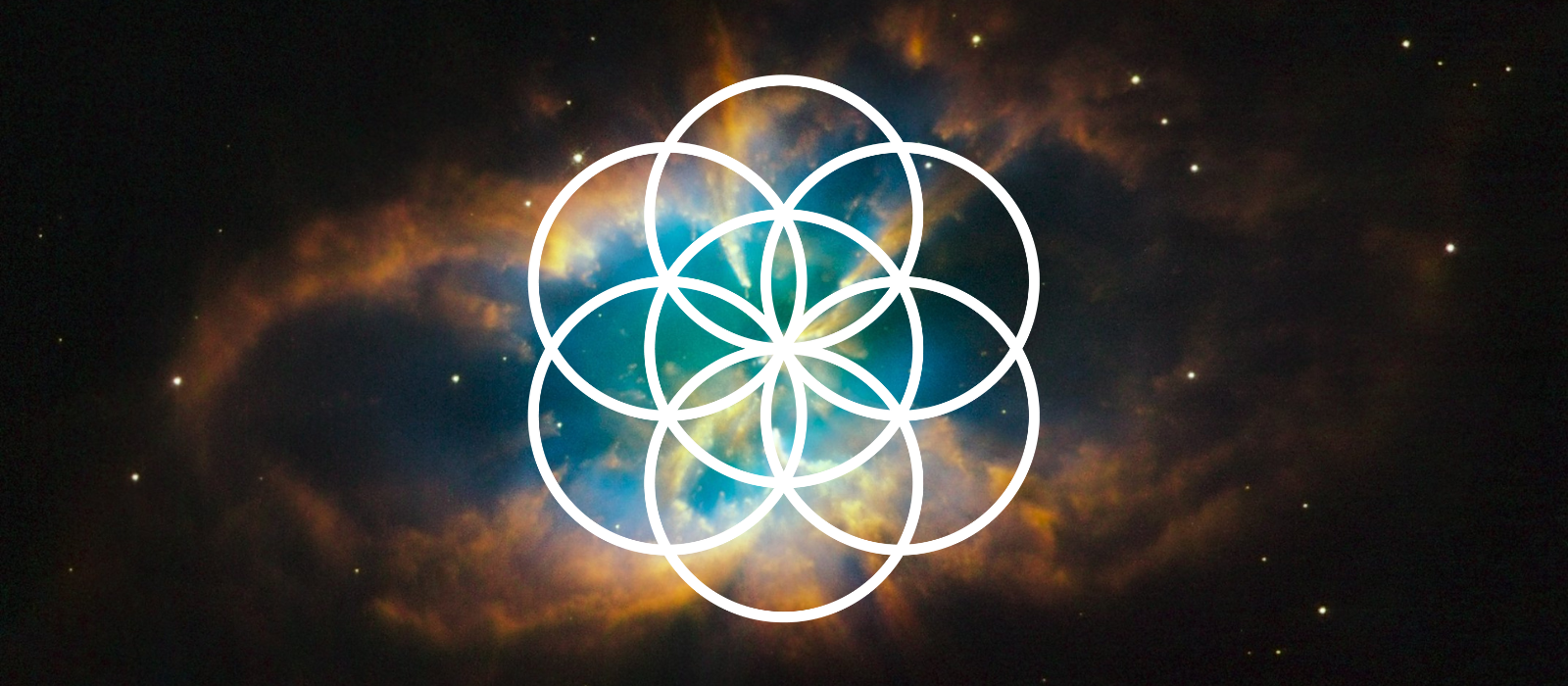
A pattern of seven circles, the Seed of Life finds resonance in the seven-day creation process narrated in religious texts. Beyond its religious undertones, it exemplifies fundamental geometric construction, demonstrating the interconnectedness of life. The first cell divisions of an embryo bear a striking resemblance to the Seed of Life, marking the genesis of life in its most primal form.
Flower of Life

This complex pattern can be traced back to ancient civilizations, and its presence can be found etched on temple walls and artifacts. Scientifically, it serves as a visual testament to the unity of life, showcasing intricate interconnections. Spiritually, it is seen as the cosmic blueprint. The way honey bees construct their hives, with hexagonal cells packed closely together, echoes the patterns seen in the Flower of Life, underscoring nature’s precision and interconnectedness.
Egg of Life
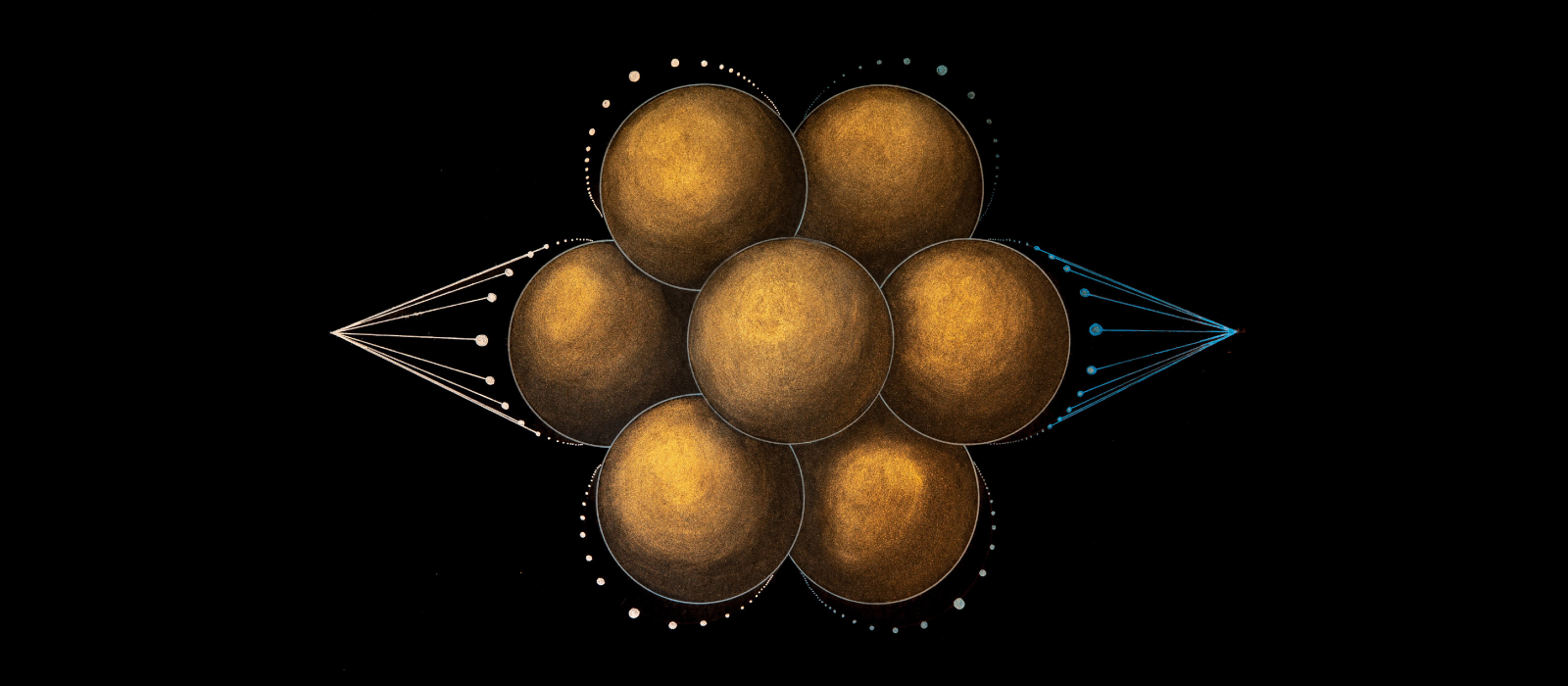
As an evolution of the Seed of Life, the Egg is associated with fertility and the spark of existence. Beyond its symbol of birth, it forms a foundational pattern in geometry, highlighting expansion and progression. The packing and arrangement of cells in early embryogenesis often mirror the structure of the Egg of Life, reflecting life’s unfolding at its inception.
Germ of Life

This pattern lays the groundwork for more advanced geometric shapes and plays a vital role in the architecture of life. Spiritually, it represents potential and the initial spark of creation. The radiating pattern seen in certain algae and microorganisms echoes the Germ of Life, pointing to life’s microscopic beginnings.
Fruit of Life

Consisting of 13 circles, it’s the hidden pattern within the Flower of Life. Its structure is the basis for Metatron’s Cube and ties deeply into spiritual understandings of space and time. The clustered pattern of seeds in pomegranates hints at the Fruit of Life’s structure, a nod to nature’s meticulous organization.
Tree of Life

A universal emblem, it showcases a hierarchical structure of the universe, serving as a spiritual roadmap for enlightenment, representing growth, rebirth, and interconnection. From the sprawling branches of oak trees to the root structures of ferns, nature frequently mirrors the Tree of Life’s motif in its growth patterns.
Merkaba

This star tetrahedron structure is central to many esoteric teachings as a vehicle of light. It showcases geometric precision and is believed to facilitate spiritual transformation. The interlocking triangles seen in star crystals found in certain minerals hint at the Merkaba’s structure, suggesting the intricate design of nature at a molecular level.
Vector Equilibrium

Known as the blueprint of the zero-point field of the universe, this structure demonstrates perfect equilibrium, presenting insights into the balance inherent in nature. The formation of bubbles in still water, balancing their walls in equal tension, is a tangible representation of the Vector Equilibrium in nature.
64 Tetrahedron

This geometric grid forms the foundational pattern for all matter in the universe. Spiritually, it represents unity, balance, and the interwoven nature of existence. The crystalline structure of certain minerals, where tetrahedra are aligned in a grid, evokes the 64 Tetrahedron pattern, signifying nature’s foundational framework.
Metatron’s Cube
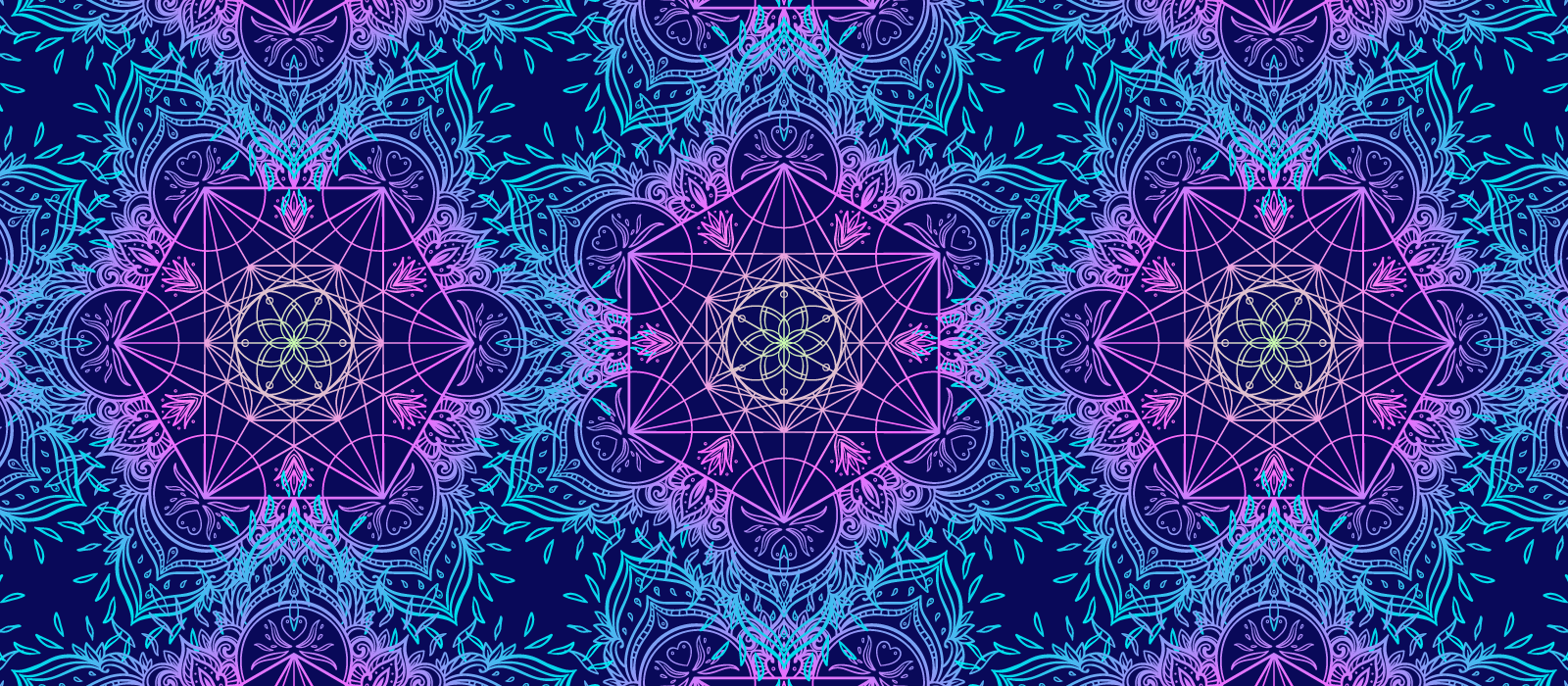
Originating from the Fruit of Life, this shape includes all five Platonic Solids. It signifies the archetypal forms that act as templates for all matter. The symmetrical patterns seen in certain snowflakes mirror the geometric intricacies found in Metatron’s Cube, reflecting the universe’s fundamental templates in frozen form.
Sacred Geometry in Nature
Nature, in its wondrous complexity, often provides the clearest glimpses into the fundamental patterns of existence. Everywhere you turn, from the sprawling cosmos to the intricate designs on a tiny leaf, there are signs of sacred geometry. In essence, it seems that nature has been harnessing the power and beauty of these patterns long before humanity identified and named them. Let’s explore how some of these symbols manifest in the natural world.
Romanesco
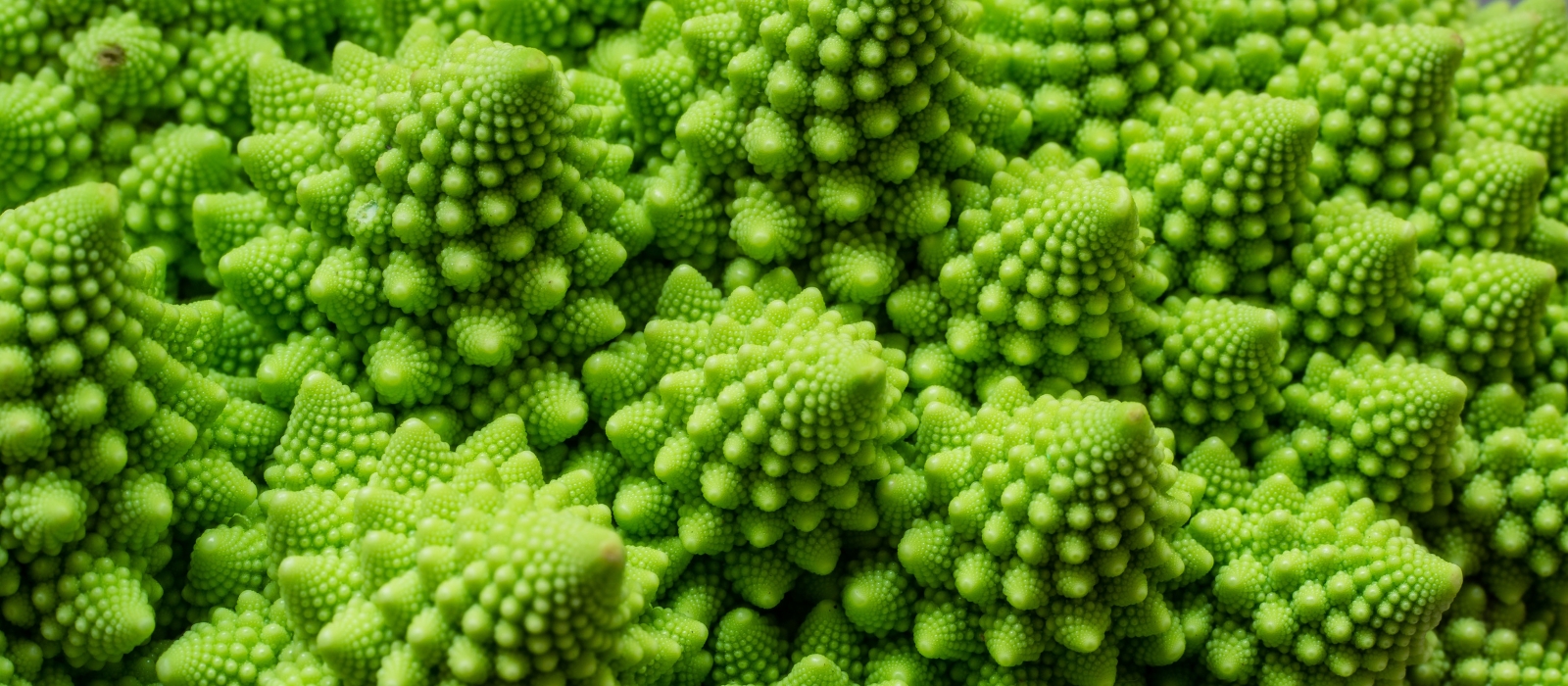
A closer look at a Romanesco broccoli reveals an enchanting fractal pattern. Each of its spiral cones is a near replica of the larger whole, exemplifying the principle of self-similarity. This fascinating vegetable showcases the Fibonacci sequence in its structure, a series of numbers wherein each number is the sum of the two preceding ones, which is closely tied to the Golden Spiral—a symbol of sacred geometry.
Sunflowers

Sunflowers, with their bright yellow petals and intricate centers, aren’t just a visual delight. The seeds within are arranged in interlocking spirals that flow in opposite directions, and the number of spirals typically aligns with the Fibonacci numbers. This arrangement ensures that the seeds are packed efficiently, so no space is wasted, revealing how nature leverages geometry to optimize growth.
Ferns

Unfurling a fern reveals the classic spiral, often associated with sacred geometry’s Golden Spiral. The repetitive pattern seen in its fronds is also a representation of fractals, patterns that repeat on every scale, which is a fundamental concept in sacred geometry. This spiral pattern of growth, or ‘logarithmic spiral,’ allows the fern to grow in a way that each new frond doesn’t block the sunlight to the older ones, a testament to nature’s efficiency and design.
Shells

Many shells, especially the nautilus shell, display a perfect example of the Golden Spiral. As the creature grows, it builds new chambers for itself, always in perfect proportion to the previous one. This logarithmic spiral ensures that, even as the nautilus grows, it maintains its shape—a crucial factor for its buoyancy and mobility.
How to Incorporate Sacred Geometry Into Your Life
The mystical symbols of sacred geometry are more than just captivating designs; they act as bridges, connecting the tangible with the intangible, logic with spirituality. While these patterns shape the universe around us, they can also deeply influence our personal space and inner experiences. Here’s how you can weave the essence of sacred geometry into various aspects of your life.
During Psychedelic Experiences

The profound geometry of the cosmos often reveals itself during psychedelic journeys. Engaging with these symbols during such experiences can anchor your journey, providing a familiar focal point amid the vastness of altered consciousness.
They can also enhance visualizations, offering intricate patterns for the mind to navigate and serve as a tool for introspection, helping one uncover the interconnectedness of existence. Think of keeping art books or posters around the next time you’re thinking about taking a psychedelic journey.
While Practicing Mindfulness and Meditation

Sacred symbols can deeply augment your spiritual practices.
Utilizing these designs as meditation focal points can help in achieving deeper states of concentration.
Reflecting on their intricate patterns can nurture a sense of balance and centeredness.
Their visual harmony can aid in cultivating mindfulness, drawing attention to the present moment.
In Decor, Body Art, or Clothing

Let the symbols resonate in your everyday surroundings and on your person. Incorporating these patterns in home decor can harmonize the space, promoting a feeling of interconnectedness.
Body art or tattoos can serve as permanent reminders of the universe’s profound design.
Clothing adorned with these symbols can serve as a testament to one’s reverence for cosmic geometry, inspiring others to explore its depth.
Observe It Through Music

Sounds, too, can follow the intricate dance of geometry. Harmonic frequencies and rhythms mirror the precision of these geometric designs. Dive into music genres that align with these patterns, such as cymatics or certain forms of trance.
Instruments like the hang drum or certain stringed instruments can evoke sounds resonating with the symmetry of sacred geometry.
Lay Out a Crystal Grid for Your Altar

Integrating sacred geometry with crystal energy can amplify your spiritual practices.
Designing crystal grids based on these symbols can serve as powerful tools for intention-setting. The union of crystal energies with the patterns can magnify the vibrational frequencies, assisting in manifestation or meditation. Reflecting on the grid can be a daily reminder of the universe’s interconnected dance.
Connect With Something Sacred
The language of sacred geometry serves as the universe’s sonnet, a melodic interplay of patterns and symmetries that underpin the very essence of life. As seekers and sentient beings, our interaction with these divine patterns offers a chance to touch the sublime, to sense the ineffable rhythm that courses through galaxies, molecules, and our spirit.
Each geometric form, from the simplicity of the Seed of Life to the complexity of Metatron’s Cube, is an echo of ageless wisdom. They are not just patterns but profound narratives, recounting tales of cosmos, evolution, and spirituality. They are visual hymns of unity, highlighting the interconnected tapestry of existence where the material and metaphysical dance in harmony.
By embracing sacred geometry, we are not merely acknowledging historical or aesthetic symbols. We are attuning our spirit to the timeless cadence of the universe, a rhythm that existed long before us and will continue long after. These patterns invite us to remember, to resonate, and to reverence. They urge us to recognize that beneath the apparent chaos, there’s an intricate order—a cosmic choreography where every spiral, every curve, and every intersection has purpose and poetry.




